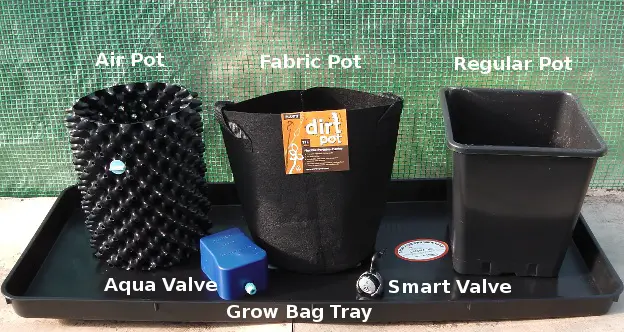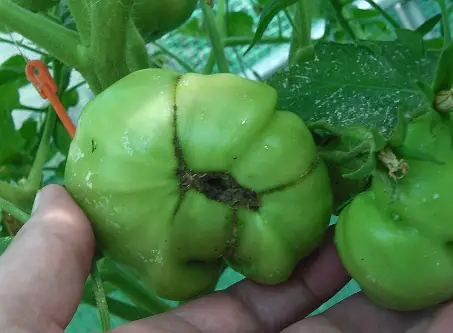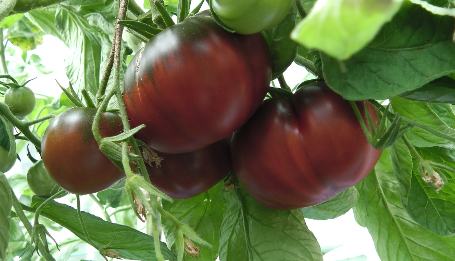Holiday watering
If there is one thing that can spoil a holiday, apart from the weather, it’s worrying about watering the tomatoes! If you don’t have a friendly neighbour who can water your tomatoes while you are away, here are a few tips below.
Taps and tubing
Watering systems work well but they can be difficult to set up – the tubing and drippers can be rather fiddly. Getting the right amount of water to each plant, not to mention the possibility of battery failure in the watering timer is a concern! The Kingfisher and the Hozelock are ones I’ve used and have been reliable.

Using a standard hosepipe placed around the garden on a water timer, then running the drippers off of it, is a good option for those with a lot of plants in containers.
If you are planting directly in the ground, a porous pipe is a good option. This is ideal for those who grow in greenhouse soil and have a lot of plants. I’ve seen greenhouses in the Vale of Evesham with hundreds of plants use this method with great success.
Valves and trays
Auto watering valves in trays such as the Smart Valve and Aquavalve are also useful. These require a large water tank if you are away for more than a few days – or if you have a lot of trays and plants to water.

Wicks and reservoirs
The wick system over a reservoir is perhaps the easiest method of watering tomatoes when away – especially when it comes to setting up – no tubing, drippers or timers – similar to the Quadgrow.
The Hozelock Grow Bag Waterer and the Quadgrow Planter are both wick systems and with a few tweaks, there’s very little that can go wrong.
Here’s one basic set up that works very well for individual plants (below).
It’s possible to add a capillary wick (after filling the pot) by pushing a strip of capillary matting up through a hole in the bottom of a pot with a screwdriver – carefully of course!

Considering the price of a bucket and a piece of capillary matting, it’s a good value system!
If you use a wick system, you will see that roots grow down into the water below. Some roots are quite happy under water, others prefer to remain where there is more oxygen. Within a root system, roots have various functions.
Physiological disorders in tomatoes
June and July have been months of high temperatures and for some of us in the UK, wet weather too! However, many of the problems we now experience as tomato growers are physiological, caused by temperatures and direct sunlight, rather than caused by diseases.
Physiological disorders include:
- Blossom End Rot – soil runs dry causing a calcium deficiency.
- Blotchy ripening – too much sun and sometimes caused by potassium deficiency.
- Greenback – shows as green shoulders around top edge of fruit.
- Fruit splitting – soil condition from very dry to very wet.
- Catfacing – underside disfigured caused by poor pollination
- Rough and sometimes thick skin caused by wide temperature swings.

One issue with milk spray is that an infection can occur when the tomato skin is disfigured.
It is also the case that over and under feeding can cause some fruit disorders, but mostly, it’s calcium deficiency and Blossom End Rot that give most hobby growers a hard time! Late blight is also just around the corner!
One thing I want to clear up is Blossom End Rot and calcium deficiency.
I’ve had a few emails this week from people who are experiencing BER and I would like to clear up any confusion…
Fact: If you grew a tomato plant in a bag of calcium, the tomatoes could still become affected by Blossom End Rot due to calcium deficiency!
Although it’s a calcium deficiency that causes the leathery patches on the underside (blossom end) of tomatoes, it is an interruption to the water supply (the soil runs dry) that stops the calcium from around the roots reaching the tomatoes in the first place – in other words, when the soil runs low on moisture, the swelling tomatoes run out of calcium and BER occurs. Even just a few hours of dry soil when the tomatoes are swelling can cause BER.
Adding calcium to the soil doesn’t prevent BER because it’s dry soil that causes the problem – roots cannot absorb nutrients from dry soil. There’s probably plenty of calcium in the soil already but it’s moisture that takes calcium into the plant. No moisture equals no calcium.
I hope that helps!?
See also: Blossom End Rot part one – part two
A Few Good Varieties
It’s always good to try a few new varieties – over the past few seasons Heartbreaker Vita and Sweet Aperitif were new on the scene and both perform very well. This season all my cherry varieties are now fruiting including Mountain Magic, a blight-free variety, Brandywine is doing fine, no sign of BER in this large heirloom variety.
Heartbreaker Vita – is a small bush variety producing heart shaped cherry tomatoes with an excellent taste – good sugar/acid balance. A good yield and ideal for growing in pots on the windowsill.
Sweet Aperitif – This one is really sweet but also has a good acid content – the high level of sugar/acid makes a high intensity tasting tom! It produces a huge yield but the tomatoes are a bit on the small side, so it’s almost a cocktail variety.
I could have increased the size of the toms slightly by reducing the amount of flowers on each truss. Also, instead of feeding a high potassium feed when flowers set fruit, giving a balanced feed until the second truss has set often increases the fruit size slightly.
Black Sea Man – Advertised as a bush variety but it thinks it’s a tall variety in my garden! A lovely big, juicy black tomato (dark purple actually) with a taste that makes it well worth growing. A wonderful taste – very sweet and juicy!

Late Blight
As we approach August, if there is more wet weather on the horizon, late blight will probably become an issue. The healthiest plants put up the best fight but will succumb in the end – even blight tolerant varieties such as Ferline and Legend can only resist to a point.
However, if blight is a regular problem for you, try Crimson Crush, Mountain Magic or Lizzano next season. They may be the only toms left standing if we get a lot of wet weather through August. Let’s hope that our plants won’t be put to the test!
Regards,
Nick
Crimson Crush Seeds – be blight resistant next season!
Quadrow Planter – Get 10% Off by entering WGNEW at checkout!


Rhys Jaggar
One thing which may be a one off fluke I have noticed this summer is that Tigerella and Alicante may be a nice combination to get a steady stream of salad tomatoes over 6-8 weeks when sowing at the same time.
This year my Tigerellas started harvesting on July 8th and I am now starting to harvest the third trusses. Alicante sown on the same date, have so far only yielded one ripe tomato and may well not mature until around 10th August.
As my aim is not to have a glut, rather tomatoes from July 1st until the end of September, I would be interested to know if anyone else has similar observations or whether this might just be a happy fluke this year…..
The comparison of Super Marmande and Black Krim appears to be even more striking, maybe as my SM seeds are home made and biodynamic, whereas I am still using commercial Black Krim seed for the time being….